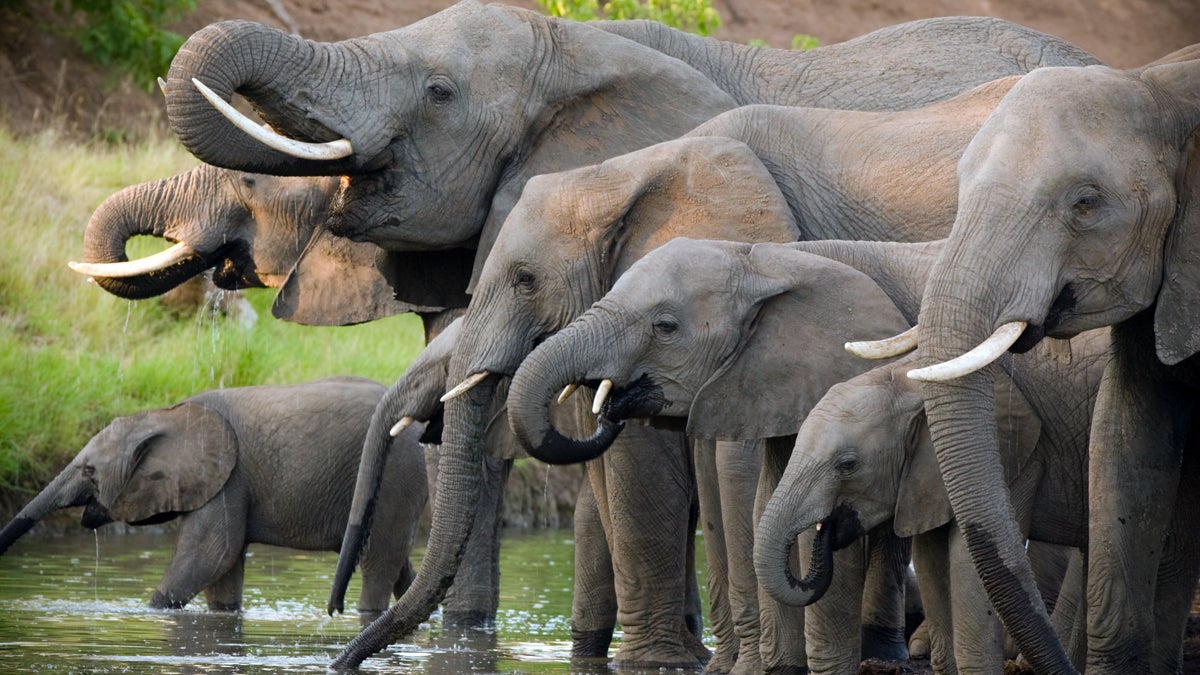Why are there so many Republican candidates?
 Photo via ShutterStock) " title="ssherdofelephantsx1200" width="1" height="1"/>
Photo via ShutterStock) " title="ssherdofelephantsx1200" width="1" height="1"/>
(Photo via ShutterStock)
OK, let’s take a head count. Chris Christie has lumbered into the race, Scott Walker and John Kasich are officially poised for liftoff… I think that’s it. Unless Dick Nixon claws his way back to the surface, it appears that the ’16 Republican field will top out at 16.
Wow. I’m old enough to remember when everyone ridiculed the 1988 Democrats for fielding seven wannabees, who were known that year as “the seven dwarves.”
So what explains 16? Why have Republicans busted all previous records? I’ll make this quick, because I’m supposed to be outside, hiking a Blue Ridge Mountain trail:
1. There are no party bosses anymore. Nobody wants to go back to the “good old days,” but the fact is, bosses instilled discipline in the ranks. If upstart Senate newbies like Ted Cruz and Rand Paul had tried to run for president back in the party boss era, they would’ve been told to wait their turn (“Cruz, your only accomplishments are running your mouth and shutting down the government, don’t waste my time”) – and, the thing is, they would’ve obeyed. And If Christie had tried to run back in the boss era, he would’ve been told, “Listen, pal, your state economy is crap, and you got a scandal cloud over your head, you’re not electable, get outta here.” And a performance artist like Donald Trump would not have even dared.
2. Party bosses used to have a tight grip on the money; now it gushes from a multitude of spigots. Today’s candidates are independent entrepeneurs. A has-been like Newt Gingrich was able to sustain his ’12 candidacy because he had a sugar daddy, Sheldon Adelson, to prime the pump. Rick Santorum stayed alive in ’12, and will do so again in ’16 (at least for a few rounds) because he’s backed by financier Foster Friess. Marco Rubio would arguably be nowhere without car dealer mogul Norman Braman. And thanks to the high court’s Citizen United ruling, fat cats and special interests stack the candidates with super PACs.
3. Back when primaries were a new-fangled thing – circa 1960 – the mainstream press filtered their message to the general public. By “mainstream press,” I’m talking about local newspapers, local TV, a handful of national papers (mostly The New York Times), and three national TV networks. Today, anybody with White House dreams can bypass the filter and connect with the public via social media. If you’re a blowhard like Trump, the networks will come anyway, because it’s “good TV.” If you have a gift for demagoguery, like Ben Carson, you can “go viral” in a heartbeat. If you have a Twitter account and a Facebook page, you can dream and scheme to your heart’s content.
4. Running for president is a great way to build a 21st century brand. Even if you don’t make it to the White House, you’ve raised your profile – and, perhaps, your speaking fees. Perhaps an editor at one of the conservative publishing imprints will call with an idea for a (ghosted) book. Perhaps Fox News will want to audition you for a show of your own. That’s what happened to Mike Huckabee after he bombed out in ’08. Sarah Palin made a fool of herself that fall – and after she fell, Fox News built her a home studio.
5. Republicans have typically chosen, as their nominee, the guy who’s “next in line.” Mitt Romney’s advantage in ’12 was that he had run in ’08. John McCain’s advantage in ’08 was that he had run in ’00. George W. Bush was a national newbie in ’00, but he was quickly annointed as the party establishment favorite. Bob Dole’s advantage in ’96 was that he had run in ’88. And so on. But the ’16 race is different. Jeb Bush, who, in a now-distant era, might well have been annointed by party bosses, intimidates nobody. His stump skills are rusty, and he’s stuck with the soiled Bush brand.
So if you take the systemic factors that I’ve listed above, and apply them to what’s arguably the most fluid Republican race in history – also, the GOP is internally split between its establishment and tea party factions, between its social moderates and the Christian moralists – then, presto, you wind up with a clown bus that can accommodate 16. It’s going to be splendid entertainment.
Follow me on Twitter, @dickpolman1, and on Facebook.
WHYY is your source for fact-based, in-depth journalism and information. As a nonprofit organization, we rely on financial support from readers like you. Please give today.

